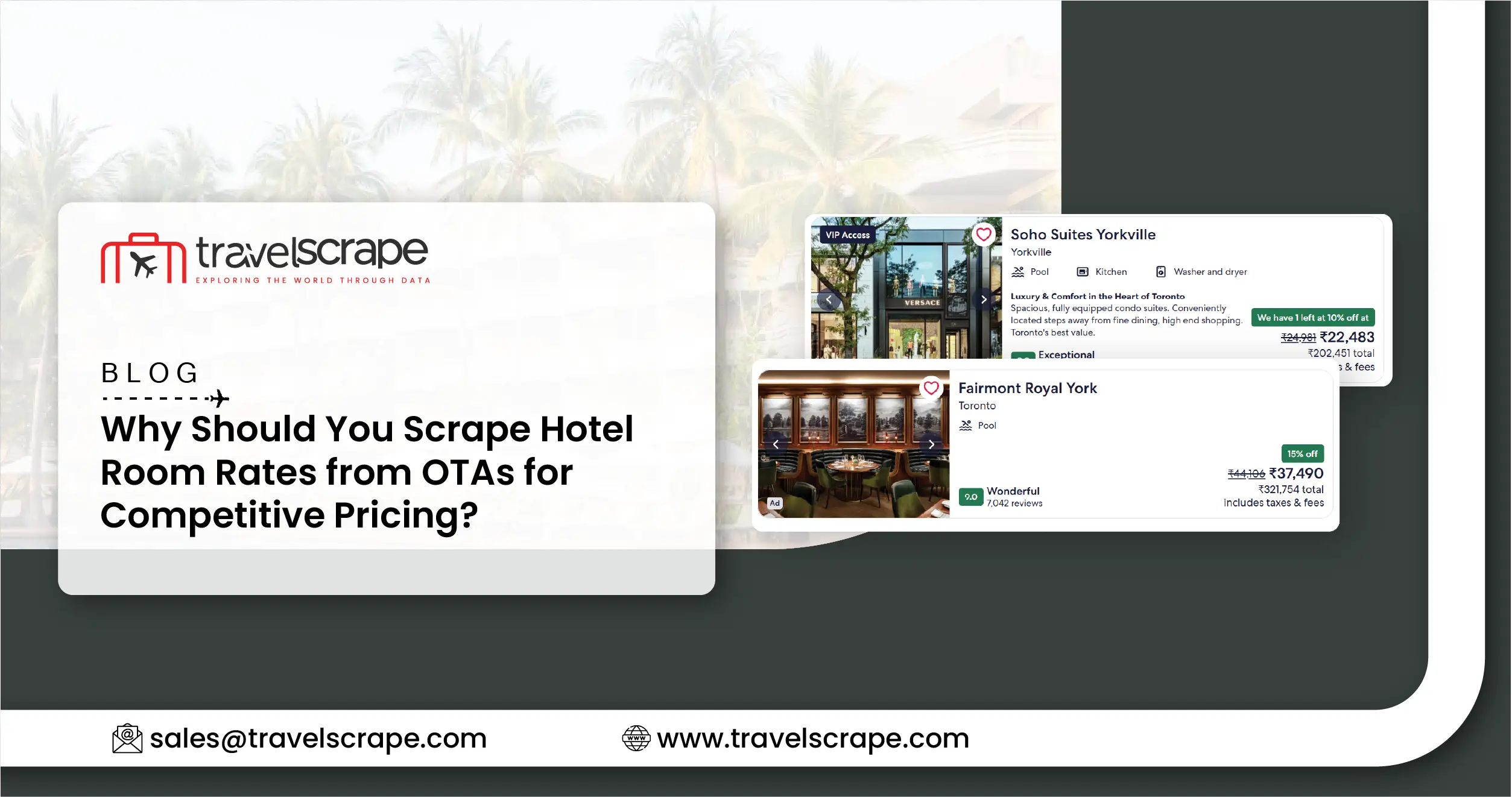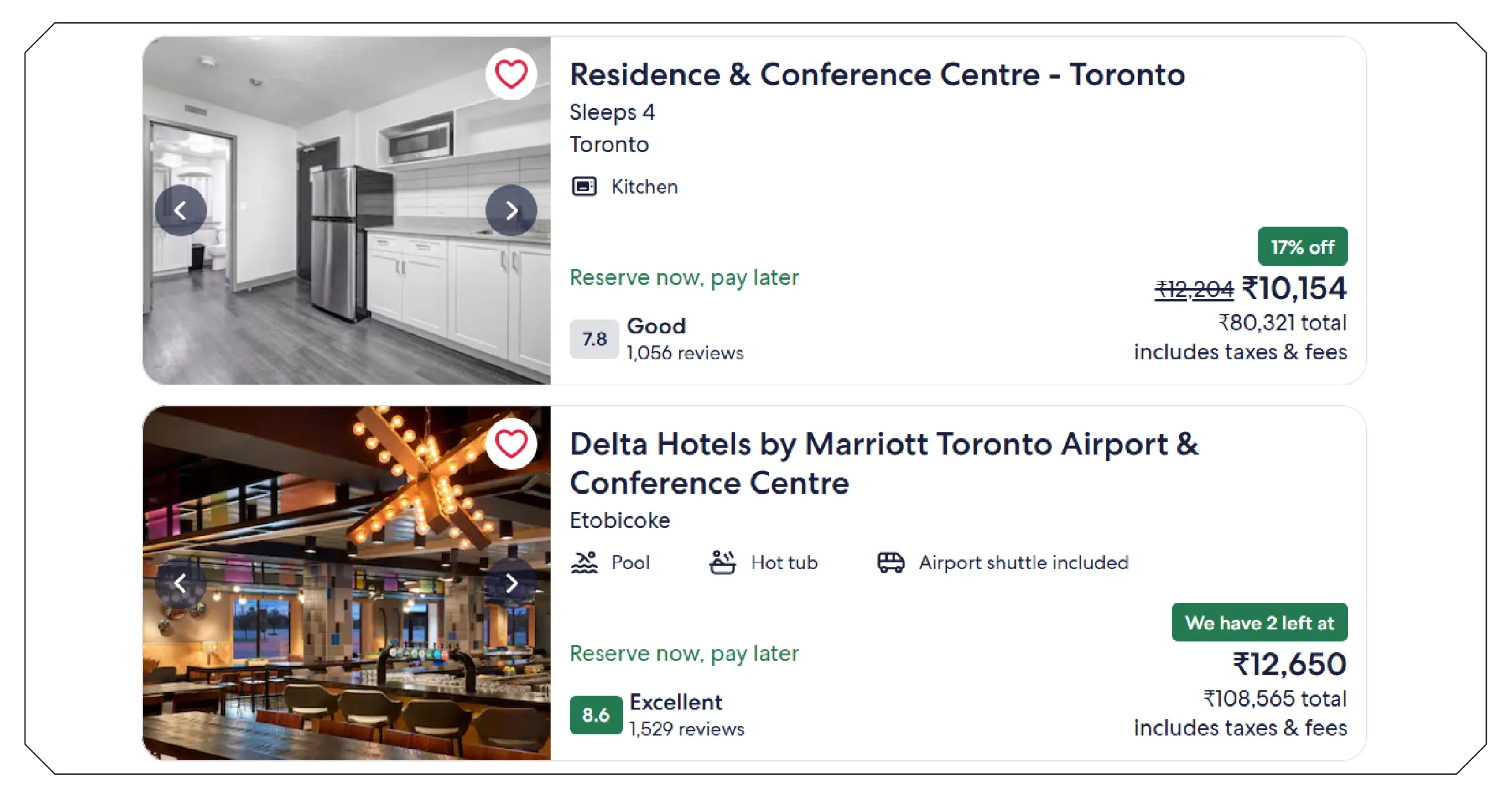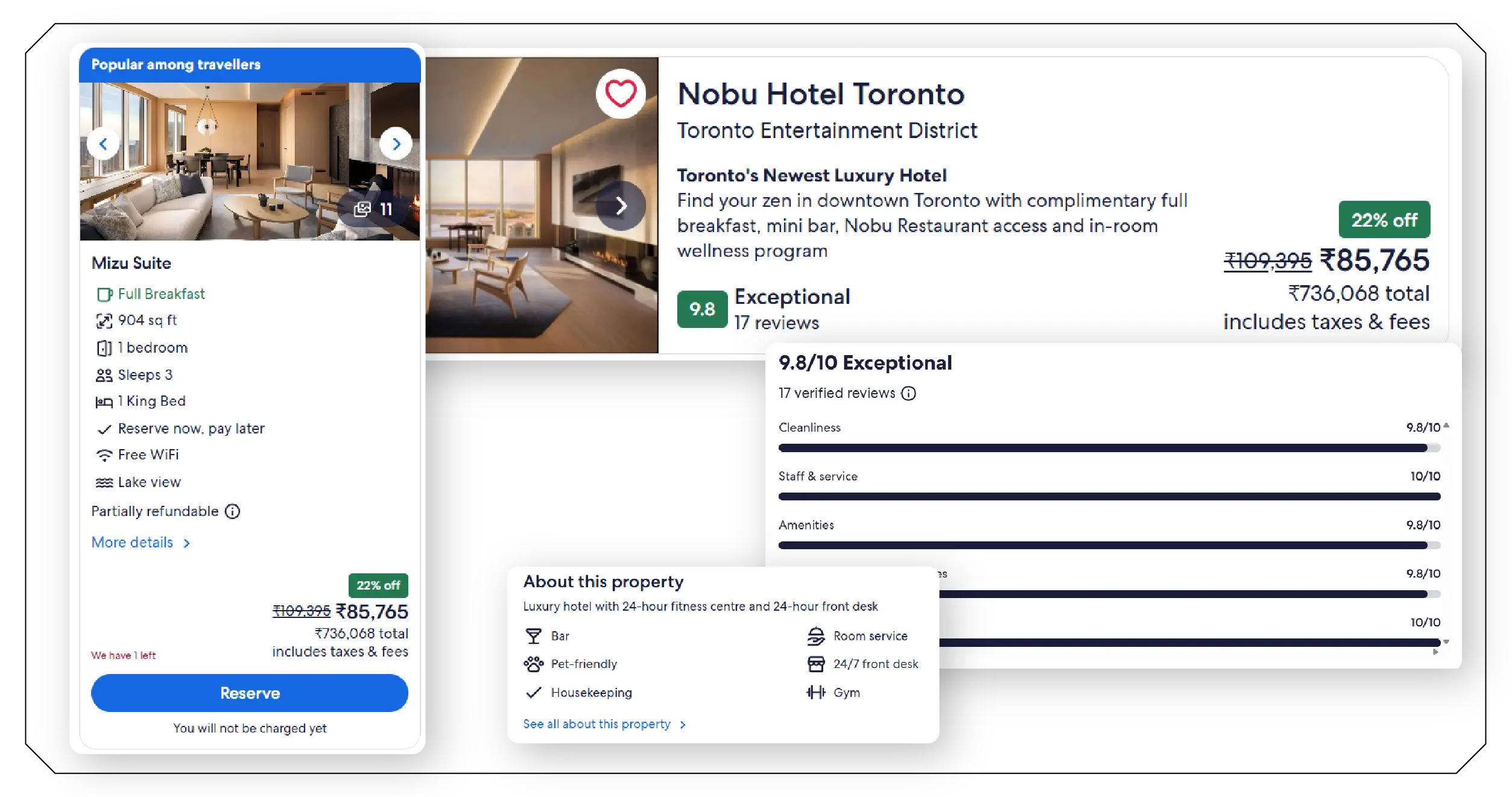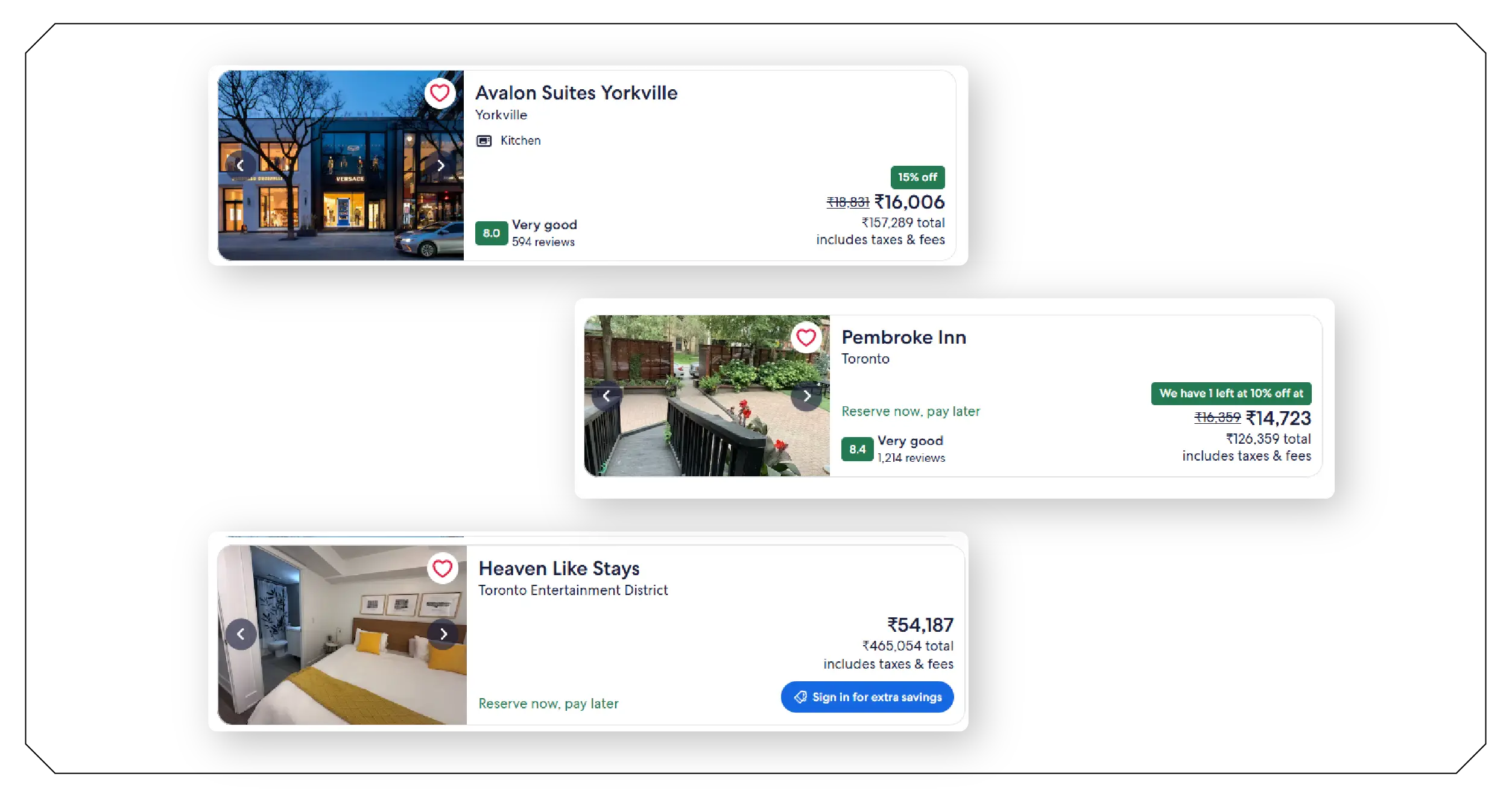Why Should You Scrape Hotel Room Rates from OTAs for Competitive Pricing?

Introduction
In the ever-competitive world of hospitality, pricing plays a pivotal role in occupancy, profitability, and overall guest experience. Online Travel Agencies (OTAs) like Booking.com, Expedia, Agoda, and Hotels.com have revolutionized hotel bookings by providing travelers with dynamic pricing, filters, and real-time availability. For hoteliers and travel-tech startups, the need to scrape hotel room rates from OTAs has become a strategic imperative — enabling pricing optimization, competitor benchmarking, and market trend analysis.
With OTA Hotel Room Rate Scraping , companies can collect structured, timely, and comprehensive data directly from OTA websites: price per night, room type, amenities, taxes, cancellation policies, discounts, and more — everything travelers compare when booking. This blog explores the purpose, methods, tools, and compliance measures involved in extracting hotel pricing data from OTAs effectively.
Why Scrape Hotel Room Rates?

The modern hotel industry relies heavily on technology-driven pricing models. OTAs aggregate prices across thousands of hotels and present them in real time. Understanding these prices allows hotels and tech platforms to:
- Benchmark competitor pricing
- Monitor price fluctuations
- Track discounts and seasonal offers
- Analyze market positioning
- Forecast demand with historical and real-time datasets
With the ability to scrape OTA hotel prices, businesses can gain insights that would otherwise be difficult to obtain through manual checks or static reports.
Key Data Points Extracted from OTA Platforms

When implementing scraping solutions, the most critical data fields collected include:
- Hotel Name
- Room Type
- Number of Guests
- Base Price
- Taxes & Fees
- Cancellation Policies
- Breakfast Inclusion
- Check-in / Check-out Dates
- Ratings & Reviews
- Discounts or Coupons
- Booking URL
This hotel pricing data from OTAs enables businesses to create their dashboards, integrate pricing trends into CRMs or RMS (Revenue Management Systems), and adjust strategies in real time.
Use Cases of Hotel Rate Scraping
Here are some practical applications for extracting hotel pricing data from OTAs:
- Revenue Management: Hotels use competitor pricing intelligence to set dynamic room rates, optimize occupancy, and boost profitability.
- Travel Aggregators: Platforms can offer travelers the best available rates by integrating scraped data.
- Market Research: Analysts monitor rate trends across regions, chains, or dates.
- Hotel Chains: Track how individual franchise locations are priced on OTAs.
- Competitor Benchmarking: Understand what room types and amenities are offered at what price.
With competitor price tracking for hotels , properties can stay competitive without underpricing or overpricing their rooms.
How Does Hotel Data Scraping Work?

Hotel Data Scraping Services use automated bots to visit OTA platforms and collect structured hotel-related pricing and availability data. This data is then normalized and delivered in formats such as JSON, CSV, or directly into dashboards.
Here’s a typical flow:
- Define Parameters: Location, check-in/check-out dates, number of guests.
- Select OTA Platforms: Booking.com, Expedia, Agoda, etc.
- Deploy Crawlers: Custom scrapers mimic human browsing behavior to collect data.
- Parse and Clean: Extract relevant hotel details, pricing, and conditions.
- Store and Analyze: Aggregate data into a centralized database for visualization and reporting.
To scrape OTA pricing data ethically and efficiently, scrapers must handle dynamic content, avoid IP bans, and comply with each site's terms of service.
Legal and Ethical Considerations
While scraping publicly available data is legal in many jurisdictions, it’s essential to comply with:
- Robots.txt protocols
- OTA platform terms and conditions
- Rate limits to avoid detection
- GDPR and other data privacy regulations
Partnering with a professional data provider that offers Hotel Data Scraping Services ensures compliance, data accuracy, and operational continuity.
Features of an Effective OTA Scraper
- Real-time Updates: For high-demand dates or price-sensitive promotions
- Scalability: Scrape data across thousands of hotels and multiple OTAs
- Proxy Rotation: Avoid IP blocks using residential or rotating proxies
- Dynamic Content Handling: Support for JavaScript-rendered pages
- Custom Scheduling: Data updates daily, weekly, or based on your needs
- Structured Output: JSON, CSV, API, or database-ready formats
These functionalities help users build a hotel pricing comparison tool that’s accurate and scalable.
Common Challenges in OTA Scraping
- Frequent Site Structure Changes: OTAs constantly update UI/UX.
- Geo-based Pricing Variations: Prices can differ by country or currency.
- CAPTCHAs & Bot Detection: Scrapers must navigate sophisticated anti-bot systems.
- Pagination & Dynamic Loading: Data might load via JavaScript or APIs, requiring advanced parsing.
- Legal Restrictions: Must respect intellectual property and user consent guidelines.
Professional solutions often offer OTA scraping API access, bypassing many of these obstacles with robust infrastructure.
Building a Hotel Room Price Trends Dataset

By regularly extracting prices across regions, star ratings, and dates, businesses can create a Hotel Room Price Trends Dataset . This can be used to:
- Forecast demand
- Predict high or low season fluctuations
- Track impact of local events on pricing
- Improve hotel pricing models using historical trends
AI-powered tools can then analyze this dataset for predictive insights and pricing suggestions.
Best Practices for Hotel Rate Scraping
- Frequency Control: Don’t overload OTA servers; scrape responsibly.
- Respect Robots.txt: Some sites prohibit crawling specific pages.
- Use Headless Browsers: Tools like Puppeteer or Selenium handle complex rendering.
- Anonymize Requests: Use proxy pools and user-agent rotation.
- Compliance Checks: Ensure scraping doesn't violate copyright or data use agreements.
- Data Quality Monitoring: Implement error handling and validation layers.
Using these practices ensures accurate and lawful data collection.
Choosing the Right Tools
There are numerous scraping tools and platforms available today, ranging from open-source frameworks to enterprise-grade solutions. These tools can help handle tasks such as dynamic content rendering, automated browsing, data parsing, proxy management, and output formatting.
Advanced platforms support features like headless browsing, CAPTCHA solving, user-agent rotation, and structured data export in formats like JSON or CSV. They are designed to manage large-scale scraping operations while minimizing the risk of IP bans or legal complications.
For those not technically inclined or lacking in-house development resources, working with professional agencies or SaaS providers that offer Hotel Data Scraping Services—including pre-built scrapers, real-time dashboards, and API integration—can be a more efficient and reliable approach. These services are optimized for compliance, accuracy, and scalability, allowing businesses to focus on insights rather than infrastructure.
Real-World Applications: How Companies Use Hotel Pricing Intelligence
- Global Hotel Chains: Adjust rates based on competitor listings across OTAs in real time.
- Startups: Create travel apps offering personalized pricing alerts or alternative hotel suggestions.
- Consulting Firms: Provide market research and trend forecasts using extracted data.
- Revenue Managers: Build predictive pricing models using Hotel Room Price Trends Dataset.
Whether you’re building a custom solution or using third-party tools, reliable scraping helps maintain your competitive edge.
How Travel Scrape Can Help You?
- Custom-Built Scrapers for OTAs — We develop tailored scraping solutions to extract hotel pricing, room details, availability, and discount data from major OTA platforms based on your specific needs.
- Real-Time Data Delivery — Our systems are designed to monitor and collect OTA data at scheduled intervals or in real time, ensuring you always have the latest hotel pricing insights.
- Scalable and Reliable Infrastructure — Whether you need data for hundreds or thousands of listings, our infrastructure supports high-volume extraction without compromising speed or accuracy.
- Structured, Clean, and Ready-to-Use Data — We deliver hotel data in clean, structured formats like CSV, JSON, or API feeds, ready for use in dashboards, pricing tools, or analytics platforms.
- Compliance and Anti-Ban Measures — We implement advanced techniques such as IP rotation, CAPTCHA solving, and user-agent switching to ensure continuous data flow while respecting scraping ethics and site policies.
Conclusion
As competition intensifies in the hotel and travel space, data-driven decisions are no longer optional. The ability to monitor and extract real-time hotel prices from OTAs gives businesses a tactical advantage in both pricing and service positioning. By choosing the right tools, respecting compliance, and ensuring scalability, businesses can transform OTA data into actionable insights.
To stay ahead in a rapidly evolving industry, companies must consistently scrape OTA websites for hotel pricing and availability data to gain full visibility into market dynamics. The best tools to extract hotel pricing data from travel sites not only enable seamless data collection but also fuel growth through intelligent decision-making.
Ready to elevate your travel business with cutting-edge data insights? Get in touch with Travel Scrape today to explore how our end-to-end data solutions can uncover new revenue streams, enhance your offerings, and strengthen your competitive edge in the travel market.

